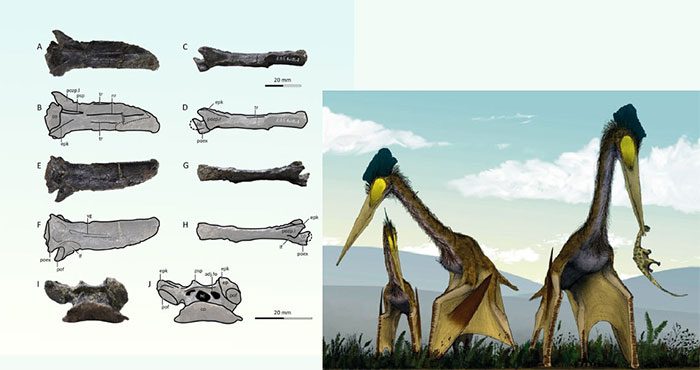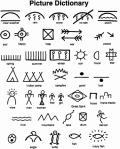The Nipponopterus mifunensis: A Potential Terror of the Dinosaurs
A new study by Dr. Naoki Ikegami from the Mifune Dinosaur Museum (Japan) and Dr. Rodrigo Pêgas from the University of São Paulo (Brazil) has identified a completely new species from the Cretaceous period.
This species, named Nipponopterus mifunensis, lived approximately 90 million years ago, according to Sci-News.

Fossil remains of the newly discovered flying monster and an illustration of a representative of the Azhdarchidae family – Photo: Darren Naish/Cretaceous Research
Pterosaurs – the flying relatives of dinosaurs – often do not leave many high-integrity fossils like their contemporaneous reptiles.
“The fragile nature of pterosaur skeletons makes their fossil record particularly uneven and biased,” the authors explain.
Thus, with a thigh bone, foot bone, toe bones, and a tail vertebra excavated from the Hokkaido region of Japan, the Nipponopterus mifunensis fossil has become a very valuable specimen.
Through various comparative analysis methods, it has been confirmed as an unrecorded species and a member of the Quetzalcoatlinae, a subfamily of the Azhdarchidae pterosaur family.
The Azhdarchidae family is particularly notable in the pterosaur lineage, often described with a “demonic” face and a gigantic body, with some species boasting wingspans of 5-11 meters, significantly larger than any bird you might see today.
With such body sizes, they easily became the tyrants of the sky and posed a threat to many dinosaur species.
According to the article published in the scientific journal Cretaceous Research, this species shares many characteristics with another undetermined pterosaur species based on a fossil found in Mongolia.
Pterosaurs were the first flying vertebrates on Earth, first appearing in the Late Triassic of the Triassic period, continuously evolving, becoming more diverse and larger in the Jurassic and Cretaceous periods thereafter.
Together with dinosaurs, theropods, and ichthyosaurs, these flying monsters also fell victim to the mass extinction event 66 million years ago caused by the Chicxulub asteroid disaster.





















































